Distress Read online
Page 10
Since then, Walsh had specialized in morality tales concerning the evils of “male science” (sic), an ill-defined but invariably calamitous activity – which even women could perform if they were led sufficiently astray, although apparently that was no excuse to change the label. I’d quoted her pithiest comment on the subject in Gender Scrutiny Overload : “If it’s arrogant, hubristic, dominating, reductionist, exploitative, spiritually impoverished, and dehumanizing – what else should we call it but male? ”
I said, “ Why? Why is she here?”
“Hadn’t you heard? But you were probably traveling; I saw it on the net just before I left. One of the murdochs hired her as a special correspondent to cover the Einstein Conference. Planet News , I think.”
“ Janet Walsh is going to report on progress in Theories of Everything?” Even for Planet Noise , that was surreal. Sending members of the British royal family to cover famines, and soap opera stars to cover summit meetings, didn’t come close.
Lee said dryly, “‘Report’ may not be quite the word for it.”
I hesitated. “Can I ask you something? I … never really had a chance before I left to look into the cults’ response to the conference.” Sisyphus would have picked up any relevant stories – but I’d requested a briefing pared down to the essentials. “I don’t suppose you’ve heard whether or not they’re … taking much interest?”
Lee regarded me with amazement. “They’ve been chartering direct flights from all over the planet for the past week. If Walsh is coming the long way, at the last minute, it’s only to keep up appearances for her employer’s sake – to maintain a veneer of non-partisanship. Stateless will be swarming with her supporters.” She added gleefully, “ Janet Walsh! Now that makes the trip worthwhile!”
I felt a stab of betrayal. “You said you weren’t—”
She scowled. “Not because I’m a follower! Janet Walsh is a hobby of mine. By day I study the rationalists. By night I study their opposites.”
“How very … Manichean.” Walsh bought the scarf and started walking away from the stall, not quite toward us. I turned so my face was hidden from her. We’d met once, at a bioethics conference in Zambia; it hadn’t been pleasant. I laughed numbly. “So this is going to be your ideal working holiday?”
Lee was puzzled. “And yours, too, surely? You must have been hoping desperately for something more than a few sleepy seminars to film. Now you’ll have Violet Mosala versus Janet Walsh. Physics versus the Ignorance Cults. Maybe even riots in the streets: anarchy comes to Stateless, at last. What more could you possibly ask for?”
#
Denied access to Australian, Indonesian and Papua-New-Guinean airspace, the (Portuguese-registered) plane headed south-west across the Indian ocean. The waters looked wind-swept, gray-blue and threatening, though the sky above was clear. We’d curve right around the continent of Australia, and we wouldn’t sight land again until we arrived.
I was seated beside two middle-aged Polynesian men in business suits, who conversed loudly and incessantly in French. Mercifully, their dialect was so unfamiliar to me that I could almost tune them out; there was nothing on the plane’s headset worth listening to, and without a signal the device made a poor substitute for earplugs.
Sisyphus could reach the net via IR and the plane’s satellite link, and I considered downloading the reports I’d missed about the cult presence on Stateless – but I’d be there soon enough; anticipation seemed masochistic. I forced my attention back to the subject of All-Topology Models.
The concept of ATMs was simple enough to state: the universe was considered to possess, at the deepest level, a mixture of every single mathematically possible topology.
Even in the oldest quantum theories of gravity, the “vacuum” of empty space-time had been viewed as a seething mass of virtual wormholes, and other more exotic topological distortions, popping in and out of existence. The smooth appearance at macroscopic lengths and human timescales was just the visible average of a hidden riot of complexity. In a way, it was like ordinary matter: a sheet of flexible plastic betrayed nothing to the naked eye of its microstructure – molecules, atoms, electrons, and quarks – but knowledge of those constituents allowed the bulk substance’s physical properties to be computed: its modulus of elasticity, for example. Space-time wasn’t made of atoms, but its properties could be understood by viewing it as being “built” from a hierarchy of ever more convoluted deviations from its apparent state of continuity and mild curvature. Quantum gravity had explained why observable space-time, underpinned by an infinite number of invisible knots and detours, behaved as it did in the presence of mass (or energy): curving in exactly the fashion required to produce the gravitational force.
ATM theorists were striving to generalize this result: to explain the (relatively) smooth ten-dimensional “total space” of the Standard Unified Field Theory – whose properties accounted for all four forces: strong, weak, gravitational, and electromagnetic – as the net result of an infinite number of elaborate geometrical structures.
Nine spatial dimensions (six rolled up tight), and one time, was only what total space appeared to be if it wasn’t examined too closely. Whenever two subatomic particles interacted, there was always a chance that the total space they occupied would behave, instead, like part of a twelve-dimensional hypersphere, or a thirteen-dimensional doughnut, or a fourteen-dimensional figure eight, or just about anything else. In fact – just as a single photon could travel along two different paths at once – any number of these possibilities could take effect simultaneously, and “interfere with each other” to produce the final outcome. Nine space, one time, was nothing but an average.
There were two main questions still in dispute among ATM theorists:
What, exactly, was meant by “all” topologies? Just how bizarre could the possibilities contributing to the average total space become? Did they have to be, merely, those which could be formed with a twisted, knotted sheet of higher-dimensional plastic – or could they include states more like a (possibly infinite) handful of scattered grains of sand – where notions like “number of dimensions” and “space-time curvature” ceased to exist altogether?
And: how, exactly, should the average effect of all these different structures be computed? How should the sum over the infinite number of possibilities be written down and added up when the time came to test the theory: to make a prediction, and calculate some tangible, physical quantity which an experiment could actually measure?
On one level, the obvious response to both questions was: “use whatever gives the right answers” – but choices which did that were hard to find … and some of them smacked of contrivance. Infinite sums were notorious for being either intractable, or too pliable by far. I jotted down an example – remote from the actual tensor equations of ATMs, but good enough to illustrate the point:
Let S = 1 – 1 + 1 – 1 + 1 – 1 + 1 –…
Then S = (1–1) + (1–1) + (1–1) +…
= 0 + 0 + 0…
= 0
But S = 1 + (–1+1) + (–1+1) + (–1+1)…
= 1 + 0 + 0 + 0…
= 1
It was a mathematically naïve “paradox”; the correct answer was, simply, that this particular infinite sequence didn’t add up to any definite sum at all. Mathematicians would always be perfectly happy with such a verdict, and would know all the rules for avoiding the pitfalls – and software could assess even the most difficult cases. When a physicist’s hard-won theory started generating similarly ambiguous equations, though, and the choice came down to strict mathematical rigor and a theory with no predictive power at all … or, a bit of pragmatic side-stepping of the rules, and a theory which churned out beautiful results in perfect agreement with every experiment … it was no surprise that people were tempted. After all, most of what Newton had done to calculate planetary orbits had left contemporary mathematicians apoplectic with rage.
Violet Mosala’s approach was controversial for a very diff
erent reason. She’d been awarded the Nobel prize for rigorously proving a dozen key theorems in general topology – theorems which had rapidly come to comprise a standard mathematical toolbox for ATM physicists, obliterating stumbling blocks and resolving ambiguities. She’d done more than anyone else to provide the field with solid foundations, and the means of making – careful, measured – progress. Even her fiercest critics agreed that her mathematics was meticulous, beyond reproach.
The trouble was, she told her equations too much about the world.
The ultimate test of a TOE was to answer questions like: “What is the probability of a ten-gigaelectronvolt neutrino fired at a stationary proton scattering off a down quark and emerging at a certain angle?” … or even just: “What is the mass of an electron?” Essentially, Mosala prefixed all such questions with the condition: “Given that we know that space-time is roughly four-dimensional, and total space is roughly ten-dimensional, and the apparatus used to perform the experiment consists, approximately, of the following…”
Her supporters said she was merely setting everything in context. No experiment happened in isolation; quantum mechanics had been hammering that point home for the last hundred-and-twenty years. Asking a Theory of Everything to predict the chance of observing some microscopic event – without adding the proviso that “there is a universe, and it contains, among other things, equipment for detecting the event in question” – would be as nonsensical as asking: “If you pick a marble out of a bag, what are the odds that it will be green?”
Her critics said she used circular reasoning, assuming from the very beginning all the results she was trying to prove. The details she fed into her computations included so much about the known physics of the experimental apparatus that – indirectly, but inevitably – they gave the whole game away.
I was hardly qualified to come down on either side … but it seemed to me that Mosala’s opponents were being hypocritical, because they were pulling the same trick under a different guise: the alternatives they offered all invoked a cosmological fix. They declared that “before” the Big Bang and the creation of time (or “adjoining” the event, to avoid the oxymoron), there had been nothing but a perfectly symmetrical “pre-space”, in which all topologies carried equal weight … and the “average result” of most familiar physical quantities would have been infinite. Pre-space was sometimes called “infinitely hot”; it could be thought of as the kind of perfectly balanced chaos which space-time would become if so much energy was poured into it that literally everything became equally possible. Everything and its opposite; the net result was that nothing happened at all.
But some local fluctuation had disturbed the balance in such a way as to give rise to the Big Bang. From that tiny accident, our universe had burst into existence. Once that had happened, the original “infinitely hot”, infinitely even-handed mixture of topologies had been forced to become ever more biased, because “temperature” and “energy” now had a meaning – and in an expanding, cooling universe, most of the “hot” old symmetries would have been as unstable as molten metal thrown into a lake. And when they’d cooled, the shapes into which they’d frozen had just happened to favor topologies close to a certain ten-dimensional total space – one which gave rise to particles like quarks and electrons, and forces like gravity and electromagnetism.
By this logic, the only correct way to sum over all the topologies was to incorporate the fact that our universe had – by chance – emerged from pre-space in a certain way. Details of the broken symmetry had to be fed into the equations “by hand” – because there was no reason why they couldn’t have been utterly different. And if the physics resulting from this accident seemed improbably conducive to the formation of stars, planets, and life … then this universe was just one of a vast number which had frozen out of pre-space, each with a different set of particles and forces. If every possible set had been tried, it was hardly surprising that at least one of them had turned out to be favorable to life.
It was the old anthropic principle, the fudge which had saved a thousand cosmologies. And I had no real argument with it – even if all the other universes were destined to be forever hypothetical.
But Violet Mosala’s methods seemed neither more nor less circular. Her opponents had to “fine tune” a few parameters in their equations, to take account of the particular universe “our” Big Bang had created. Mosala and her supporters merely described real experiments in the real world so thoroughly that they “showed the equations” the very same thing.
It seemed to me that both groups of physicists were confessing – however reluctantly – that they couldn’t quite explain how the universe was built … without mentioning the fact that they were there inside it, looking for the explanation.
#
Silence filled the cabin as we flew into darkness. Display screens blinked out, one by one, as passengers dozed off; everyone had had a long journey, wherever they’d started from. I watched the cloud banks behind us darken – a swift, violent sunset, metallic and bruised – then I switched to a route map as we headed north-east, just beyond sight of New Zealand. I thought of space probes on slingshot orbits to Venus via Jupiter. It was as if we’d had to take the long way round to build up enough velocity – as if Stateless was moving too fast to be approached any other way.
An hour later, the island finally appeared ahead of us, like a pale stranded starfish. Six arms sloped gently down from a central plateau; along their sides, gray rock gave way to banks of coral, which thinned from a mass of solid outcrops to a lace-like presence barely breaking the surface of the water. A faint blue bioluminescent glow outlined the convoluted borders of the reefs, enclosed by a succession of other hues – the color-coded depth lines of a living navigation chart. A small cloud of flashing orange fireflies was clustered in the nearest of the starfish’s armpits; whether they were boats anchored in the harbor, or something more exotic, I couldn’t tell.
Inland, a sprinkling of lights hinted at a city’s orderly grid. I felt a sudden rush of unease. Stateless was as beautiful as any atoll, as spectacular as any ocean liner … with none of the reassuring qualities of either. How could I trust this bizarre artifact not to crumble into the sea? I was accustomed to standing on solid rock a billion years old – or riding machines of a suitably modest human scale. In my own lifetime, this whole island had been nothing but a cloud of minerals adrift over half the Pacific – and from this vantage, it didn’t seem beyond belief that the ocean might surge in through a thousand invisible pores and channels to dissolve it all, reclaim it all, at any moment.
As we descended, though, the land spread out around us, streets and buildings came into view, and my insecurity faded. One million people had made this their home, staking their lives on its solidity. If it was humanly possible to keep this mirage afloat, then I had nothing to fear.
Chapter 10
The plane emptied slowly. Passengers pressed forward, sleepy and irritable; many were clutching cushions and small blankets, looking like children up past their bed time. It was only about nine p.m. here – and most people’s body clocks would have agreed – but we were all still dazed and cramped and weary. I looked around for Indrani Lee, but I couldn’t spot her in the crowd.
There was a security gate at the end of the umbilical, but no airport staff in sight, and no obvious device for interrogating my passport. Stateless placed no restrictions on immigration, let alone the entry of temporary visitors – but they did prohibit certain imports. Beside the gate was a multilingual sign which read:
Feel free to try to bring through weapons.
We’ll feel free to try to destroy them.
STATELESS AIRPORT SYNDICATE
I hesitated. If my passport wasn’t read, and the seal of approval for my implants taken into account … what would this machine do to me? Incinerate a hundred thousand dollars worth of hardware – and fry a large part of my digestive tract in the process?
I knew that was paranoid: I
could hardly have been the first journalist to set foot on the island. And the message was probably aimed at visitors from certain privately-owned South American islands – “libertarian havens” established by self-styled “political refugees” from the US gun law reforms of the twenties – some of whom had tried to bring Stateless around to their special way of thinking on a number of occasions.
Nevertheless, I stood back for several minutes, hoping that someone in uniform would appear to put my mind at ease. My insurance company had declined to offer me any kind of cover once I was on Stateless – and when my bank found out I’d been here, they wouldn’t be pleased; they still owned most of the chips in my gut. Legally, the risk wasn’t mine to take.
No one turned up. I walked through. The frame of the scanner was loose, and it shuddered slightly – my body pinning a tiny portion of the magnetic flux, dragging it forward, then releasing it to rebound like elastic – but no microwave pulses seared my abdomen, and no alarms went off.
The gate led into a modern airport, not much different from many I’d seen in small European cities, with clean-lined architecture, and movable seating – which groups of people had arranged in inward-facing rings. There were only three airline counters – and they all displayed much smaller versions of their logos than usual, as if not wishing to attract too much attention. Booking passage here, I’d found no flights advertised openly on the net; I’d had to post a specific query in order to obtain any information. The European Federation, India, and several African and Latin American countries only enforced the minimal boycott of selected high technology which the UN demanded; these airlines were operating entirely within the laws of their home nations. Still, irritating the Japanese, Korean, Chinese and US governments – not to mention the biotech multinationals – would always carry a risk. Committing the offense discreetly wouldn’t conceal anything – but no doubt it acted as a gesture of obeisance, and lessened the perceived need for examples to be made of the collaborators.

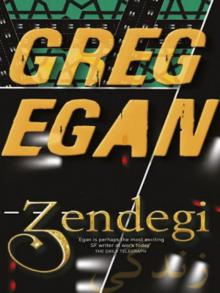 Zendegi
Zendegi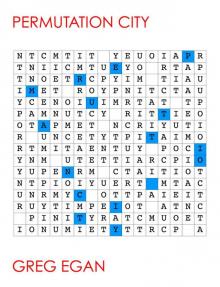 Permutation City
Permutation City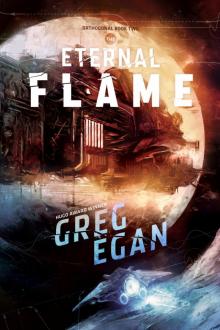 The Eternal Flame
The Eternal Flame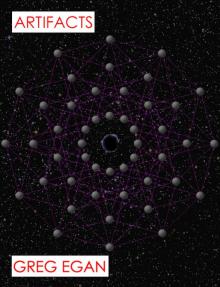 Artifacts
Artifacts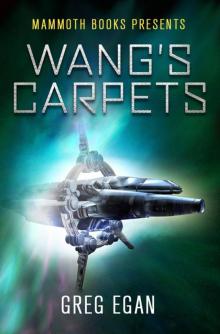 Wang's Carpets
Wang's Carpets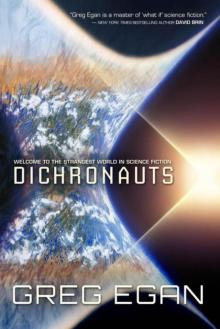 Dichronauts
Dichronauts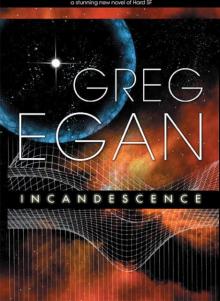 Incandescence
Incandescence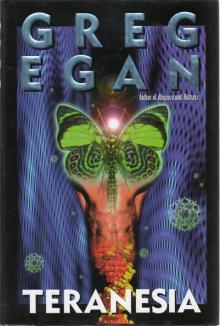 Teranesia
Teranesia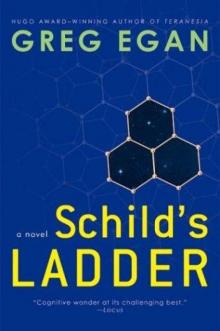 Schild's Ladder
Schild's Ladder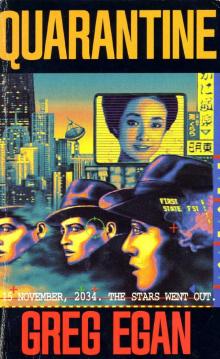 Quarantine
Quarantine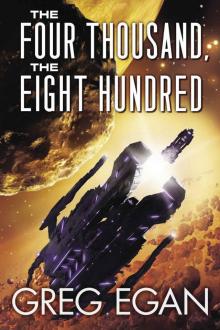 The Four Thousand, the Eight Hundred
The Four Thousand, the Eight Hundred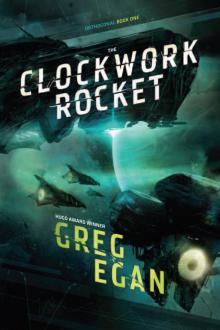 The Clockwork Rocket
The Clockwork Rocket Zeitgeber
Zeitgeber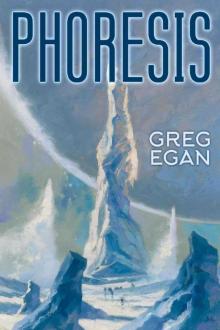 Phoresis
Phoresis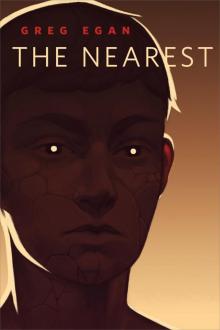 The Nearest
The Nearest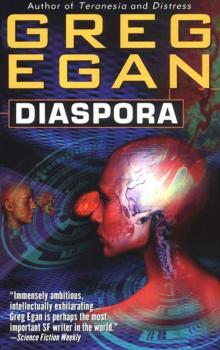 Diaspora
Diaspora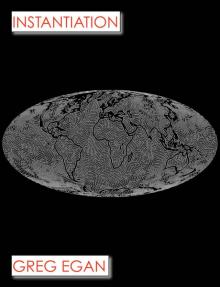 Instantiation
Instantiation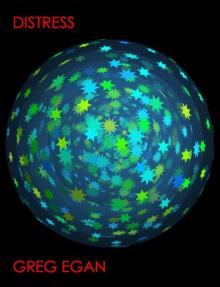 Distress
Distress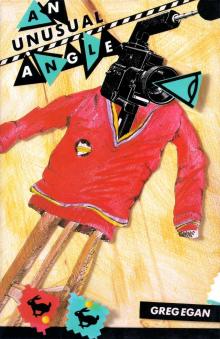 An Unusual Angle
An Unusual Angle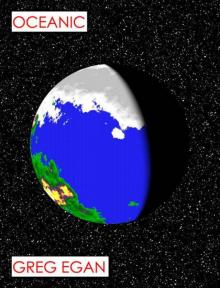 Oceanic
Oceanic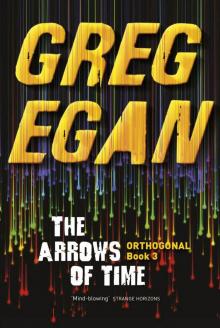 The Arrows of Time
The Arrows of Time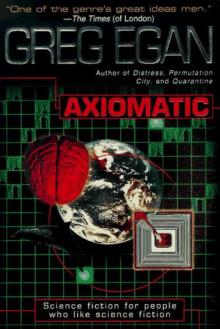 Axiomatic
Axiomatic![Anthology 2. Luminous [1998, 2010] Read online](http://i1.bookreadfree.com/i/03/18/anthology_2_luminous_1998_2010_preview.jpg) Anthology 2. Luminous [1998, 2010]
Anthology 2. Luminous [1998, 2010]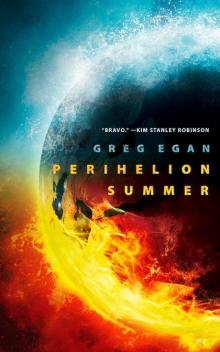 Perihelion Summer
Perihelion Summer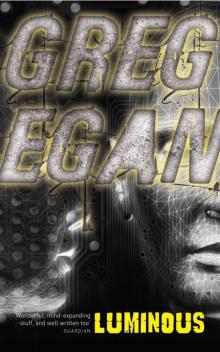 Luminous
Luminous